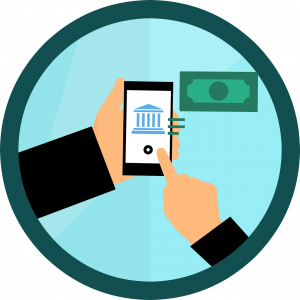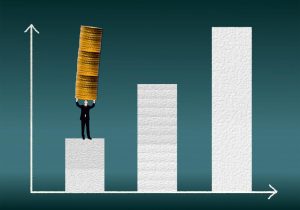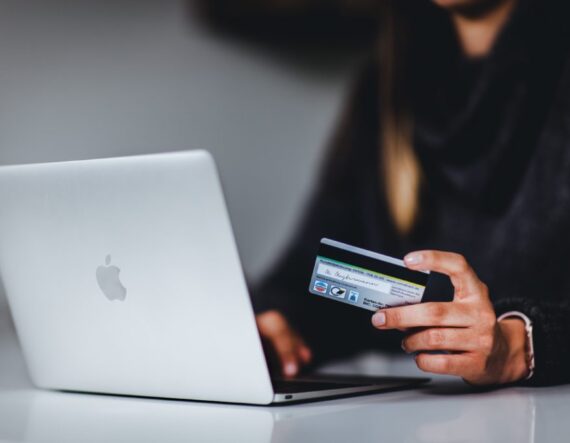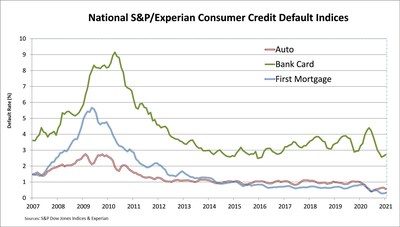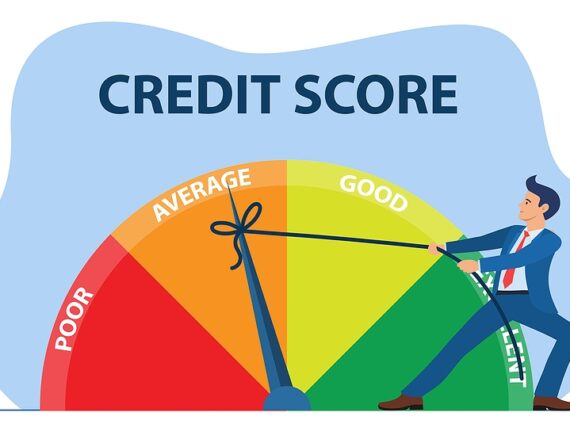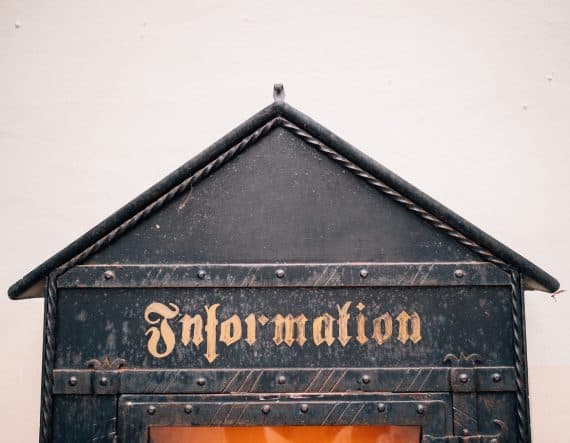Can Alternative Credit Data Help the Credit Invisible?
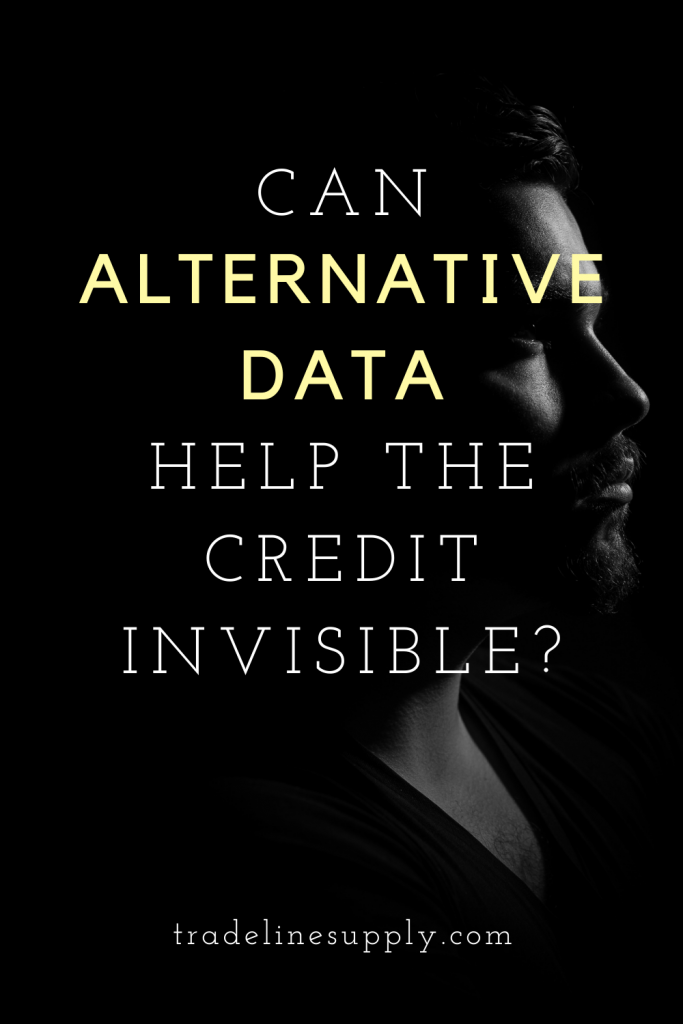 26 million consumers in America have no credit record whatsoever. On top of that, there are an additional 19 million consumers who do have credit files, but they do not contain sufficient credit information to be scored by a widely available credit scoring model. These consumers—in total making up nearly one in five American adults—are the “credit invisibles” and “credit unscorables.”
26 million consumers in America have no credit record whatsoever. On top of that, there are an additional 19 million consumers who do have credit files, but they do not contain sufficient credit information to be scored by a widely available credit scoring model. These consumers—in total making up nearly one in five American adults—are the “credit invisibles” and “credit unscorables.”
Due to a lack of credit history, these consumers are virtually invisible to the credit system. That means credit can be very hard or even impossible to obtain when it is needed. After all, we all know that “it takes credit to get credit,” since lenders often don’t want to take the chance of lending to someone with no prior credit record.
“Alternative data,” which involves using data sources other than traditional credit reporting information to make lending decisions, is a concept that is becoming increasingly popular as one possible solution to the problem of credit invisibility.
Let’s shed some light on the emerging topic of alternative credit data and how it could help or hurt consumers.
What Is Alternative Credit Data and How Does It Differ From Traditional Credit Data?
Traditional credit data refers to your credit report, credit scores, and the information they contain. In other words, traditional credit data primarily consists of information about how you manage your tradelines, which are the credit accounts you own.
When we are talking about credit, we are almost always discussing traditional credit data since that is what is used to make most lending decisions.
In contrast, alternative credit data is financial information about consumers that is not typically included in traditional credit reports. Examples of alternative credit data sources include rent payments, utility payments, full-file public records, and data from alternative financial service providers (ASFPs), such as payday lenders.
Traditional Credit Data
Alternative Credit Data
Contains information about the tradelines in your credit report
Information comes from other sources since there is insufficient credit data
Payment history for loans and credit cards
Data from alternative financial service providers (e.g. payday lenders)
Credit utilization ratio
Utility payment history
Delinquencies
Rent payment history
Credit mix
Consumer-permissioned data
Credit inquiries
Full-file public records information
What Is the Purpose of Alternative Credit Data?
Alternative data includes data that consumers may choose to allow credit reporting companies to access, such as bank account balances.
For the millions of consumers who lack credit reports based on traditional credit data, building credit and obtaining credit is a challenge. Without a verified credit history, lenders cannot make an informed decision about whether to extend credit to a consumer.
One way the credit scoring industry is trying to address this problem is by creating new types of credit scoring algorithms that utilize different sources of data that are not contained within a consumer’s traditional credit report but still have predictive power with regard to a consumer’s credit risk.
These alternative data sources, such as rent and utility bill payments, are more accessible and more commonly used among those who are credit invisible.
The idea behind alternative credit data is that a consumer’s non-credit financial information can still be used to predict whether the consumer is financially responsible and creditworthy. This information can help lenders provide credit to consumers who may have a thin credit file or no credit file at all but who may still be creditworthy.
Therefore, using alternative data to make lending decisions could theoretically allow lenders to expand their customer base and earn more revenue while providing more credit to consumers who lack a traditional credit history.
How Do Consumers Benefit From Alternative Data?
The benefit to consumers, of course, is that many consumers who may be creditworthy but are invisible to the traditional credit system could potentially use alternative data as a path to building credit where they lacked one before.
For example, a consumer who gets a good credit score using an alternative data scoring method might now be able to get approved for an unsecured credit card, whereas they might have had to put down a deposit to get a secured credit card if the lender had only been able to use traditional credit data. This would allow the consumer to hold onto the cash they would have had to put down as collateral and instead save it for emergencies or some other use.
Applications of Alternative Credit Data
Consumers who are “credit invisible” but have a history of being financially responsible in other areas may benefit from the use of alternative credit data.
Although alternative credit data is still a relatively new field, major players in the credit industry are already working on developing new credit scoring tools that make use of alternative data.
FICO XD and FICO XD 2
FICO is working on developing new credit scoring models that can reliably assess the credit risk of consumers who are unscorable using traditional credit scoring methods.
The FICO Score XD “leverages alternative data sources to give [bankcard] issuers a second opportunity to assess otherwise unscorable consumers.”
Nerdwallet reports that the FICO XD model uses phone, utility, and cable payment data as well as things like information about your home if you are a homeowner, occupational licenses you may have, and your bank records.
Compared to traditional FICO scores, this model has the same credit score range of 300 to 850 and the same expected credit risk for each score group within that scale.
According to FICO, the XD scoring model can provide a score for more than half of all credit applicants that had previously been unscoreable, which adds millions of consumers to the scorable population.
Although only about a third of applicants that can be scored with FICO XD receive scores higher than 620, which is considered to be fair credit, the company claims that almost half of borrowers with higher FICO XD scores later go on to obtain credit and achieve traditional FICO scores of 700 or greater.
FICO XD’s newer version, FICO Score XD 2, works similarly but has been further refined to provide more accurate results.
Similarly, the FICO Score X incorporates alternative data sources for credit scoring, such as telecom payments, mobile payments, “digital footprint” data, and even data from psychological surveys to provide a way for international lenders to score previously unscorable consumers.
UltraFICO
The UltraFICO score, currently being pilot tested by Experian, will use “consumer-permissioned” banking data to enhance its scoring capabilities. In this case, what that means is that consumers can choose to contribute data about their checking, savings, and money market accounts in order to allow lenders to assess their creditworthiness by looking at their overall financial profile.
Some of the specific financial factors considered by the UltraFICO score include:
A history of positive bank account balances is a beneficial factor with the UltraFICO credit score.
How long you have had your bank accounts open
How often you make banking transactions
When your most recent bank account transactions occurred
Verification that you often have money saved in your bank accounts
A history of having positive bank account balances
FICO says this credit scoring model can help increase access to credit for “nontraditional borrowers” who have limited credit histories, particularly young consumers, immigrants, and those who are rebuilding their credit after experiencing financial distress.
The company also states that UltraFICO could potentially improve credit access for most Americans and could be especially helpful for those whose credit scores are in the “grey area” of the upper 500s and lower 600s or those whose scores just barely miss a lender’s credit score cutoff.
Seven out of 10 consumers who have had consistently positive banking habits in the past three months could get a higher UltraFICO score than their traditional FICO score, according to the company’s website.
Experian Boost Credit Score
Experian has also come up with their own alternative data solution called Experian Boost, which is a free service that allows users to provide access to their bank accounts in order to get credit for their on-time payments of bills such as electricity, water, gas, phone plans, cable, and even Netflix.
One major advantage with Experian Boost is that it only counts positive payment history, so missed payments will not hurt your score. If the program detects that you have missed a payment, it will remove that account from your credit file so that the late payment will not hurt your score.
Experian Boost lets you add positive payment history from your utility bills and some streaming services.
The New York Times has reported that the reason why Experian Boost does not consider negative information about your bills is that anything negative on your record will most likely end up on your credit report anyway, either because your utility provider may start reporting it to the credit bureaus or the account may get sold to a collection agency which then reports the collection account.
In addition, Experian says that you can disconnect your bank accounts if your FICO score decreases because of Experian Boost and that you can always reconnect your account later once your finances have improved.
According to Experian, consumers who sign up for Experian Boost receive an average boost to their FICO score of 13 points. Those who do not see a boost initially may see a larger effect over time if they keep their account connected as the program continues to check your account for payments you made on time and adding those to your credit profile.
If Experian Boost helps your credit but you later decide for whatever reason that you no longer want to use it, be aware that the positive payment history that was helping you will be removed from your credit profile, so it’s likely that your credit score will fall.
TransUnion FactorTrust
In 2017, TransUnion acquired FactorTrust, a company that provides lending data on short-term and small-dollar loans (e.g. payday loans), which are not reported in traditional credit reports and are often utilized by underbanked and credit invisible consumers.
This information will allow TransUnion to assess credit risk for a larger group of consumers.
In addition, TransUnion says that their small-dollar loan data will help lenders comply with the Consumer Financial Protection Bureau’s recent changes to payday lending rules meant to protect consumers.
Equifax DataX
In 2018, Equifax acquired a specialty credit reporting agency and provider of alternative credit data called DataX. Equifax stated that they plan to use DataX to help lenders improve financial inclusion and access to credit, especially for consumers who are underbanked.
DataX claims that they can help lenders better evaluate the credit risk levels of prospective customers by utilizing a “massive, proprietary consumer database that provides valuable insights on consumers not covered by traditional credit information sources.” This database contains demographic, financial, and credit data on millions of consumers.
The Downsides of Alternative Credit Data
In theory, alternative data sounds like a promising solution to the credit catch-22 and the problem of credit invisibility. According to FICO’s white paper on the subject, the use of alternative data allows millions of previously unscorable consumers to achieve credit scores that are high enough to get access to credit.
However, while the credit scoring and credit reporting companies only talk up the positives of their alternative data products, there are some drawbacks to this approach that also need to be considered.
Alternative Data May Perpetuate Credit Inequality
Although alternative data is marketed as a solution to credit invisibility, it’s possible that it could actually worsen credit inequality.
Despite FICO’s impressive claims, in the company’s white paper, we can clearly see how alternative data in credit scoring might not be so helpful to many consumers.
According to their research, about a third of the “newly scorable” consumers scored 620 or above using the alternative data score. These are the millions of consumers they refer to that may now be able to access credit.
But if only a third of consumers scored 620 or above, that means two-thirds of consumers now fall below 620 with the alternative data score, which is considered bad credit. That means there are twice as many of the newly scored consumers who end up with bad credit than those who end up with good credit after the alternative data model has been applied.
In many cases, having bad credit is even worse than having no credit, because instead of starting from scratch, you have derogatory information on your credit report that is going to weigh down your credit score. This can make it even more difficult to get your credit to a good place than if you had started with no credit history at all.
The results of FICO’s alternative data research bear out the concerns presented by the National Consumer Law Center (NCLC). According to the NCLC, if utility payments become part of the credit reporting system, this could result in millions of consumers getting negative marks and would disproportionately impact low-income consumers and people of color.
Although alternative credit data is pitched as a way to lift millions of consumers out of credit invisibility, in reality, it is another profit-generating tool created by the credit scoring and reporting companies to sell to financial institutions. Any benefit or harm to consumers is incidental to the primary goal of the banks making more money by lending to more consumers.
As you know from our article, “What Happened to Equal Credit Opportunity for All?” the credit scoring system was built upon and continues to perpetuate a history of financial inequality in our country.
Unfortunately, although it has the potential to help millions of consumers if implemented in the right way, it seems likely that alternative credit data may just end up being used to continue the legacy of inequality and discrimination that is still firmly entrenched in the credit industry and in our society in general.
Data Privacy Concerns
Another major concern with alternative data is privacy. In recent years, major data breaches have been happening left and right, including the 2017 Equifax breach that compromised the information of around 148 million consumers. The credit bureaus have shown with multiple egregious security breaches that consumers cannot trust them to safeguard their personal information.
Experian Boost, as well as other similar “consumer-permissioned” data reporting systems, require users to allow access to their bank account in order to report bill payments. For many, it may be hard to stomach the idea of giving FICO or the credit bureaus access to their personal information when they have repeatedly mishandled sensitive consumer data. Those who do choose to use such services do so at the risk of their information potentially being compromised.
Some Lenders May Not Use Alternative Data Credit Scores
Since alternative credit data is still a relatively new development, one downside is that many lenders may not be using alternative data or credit scores based on it in order to make their lending decisions.
The credit industry is slow to change, as we talked about in “Do Tradelines Still Work in 2020?”, so it may take several years for alternative credit data to be widely adopted.
Therefore, at this time, there is no guarantee that your lender of choice will have the ability to access and use your alternative credit data.
Conclusion: Is Alternative Data Helpful or Harmful?
Alternative data has the potential to lift millions of consumers out of credit invisibility, which is a step toward providing equal credit opportunity to these consumers.
However, it has just as much potential to harm consumers and perpetuate credit inequality due to the issues we discussed above.
As with any credit reporting or credit scoring tool, we have to remember who these tools are designed for and who they are intended to serve: the banks.
Ultimately, the purpose of alternative credit data is to help lenders make more money by lending to a greater number of consumers. For consumers, the benefits and risks are not so clear cut.
If you have no credit record or a thin credit file, alternative credit data scoring systems may be worth considering and trying out. As with any major credit moves, be sure to do your due diligence as a consumer by researching how these programs work and how you can protect yourself and your credit if you do not get the results you are looking for.
What is your take on the issue of alternative credit data? Have you tried any of these alternative data services yourself? Drop a comment below to let us know your thoughts!
Read more: tradelinesupply.com

